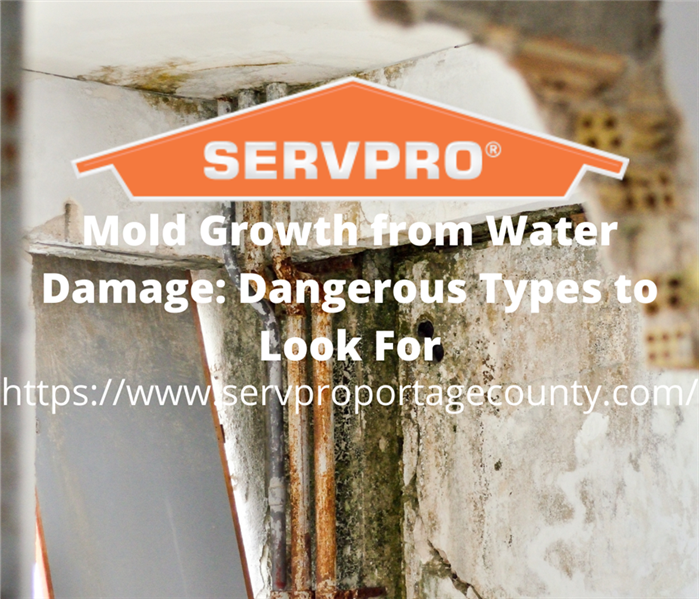Mold Growth from Water Damage: Dangerous Types to Look For
1/4/2021 (Permalink)
Discovering you have mold in your home can be scary, but it is important to know what exactly you are dealing with. Mold is a term for many types of fungi that are unwanted, unappealing patches of black, brown, yellow, pink, green, smelly, or fuzzy growths. There are countless varieties found both indoors and outdoors and almost always hold a negative connotation, but without mold, we wouldn’t have penicillin or bleu cheese! When it comes to your home, the negative connotation holds true and should be taken care of by a professional if found. Active mold needs water to grow and thrive, so having water damage in the home is a perfect breeding ground.
Harmful molds can be any of the following classifications:
- Allergenic
- Pathogenic
- Toxigenic
Common Molds Found at Home:
- Acremonium - Toxigenic mold type that evolves in appearance over time. It starts out a small moist mold and turns into a fine powdery substance. Typically grows in areas near humidifiers, cooling coils, and drain pans.
- Alternaria - The most common form of allergenic mold in the world. It’s a velvet-textured mold with dark green or brown hairs. It typically grows wherever dampness occurs.
- Chaetomium - Toxigenic mold commonly found in water-damaged homes, most commonly in a damp or leaking roof, basement, or sink. It has a cotton-like texture and usually changes colors from white to grey to brown, and eventually black.
- Penicillin - Allergenic mold that is easily recognizable with blue or green color and velvety texture. Often found in water-damaged homes and buildings. It is found in materials such as carpets, wallpapers, ducting, and even mattresses.
- Stachybotrys - Toxigenic mold also known as “black mold”, also can cause health effects. It is dark green or black with a slimy texture. Stachybotrys thrive in damp, wet areas with high humidity levels that maintain these environmental conditions for weeks.
These are just a few of the most common mold types, but there are many more that can be found and can be harmful to you and your family. Since mold thrives in damp environments, a home with water damage becomes the perfect breeding ground. Mold can be dangerous and should be handled by professionals. If you have mold or suspect you might; call SERVPRO so you can rest easy knowing the problem will be handled quickly and safely.






 24/7 Emergency Service
24/7 Emergency Service
